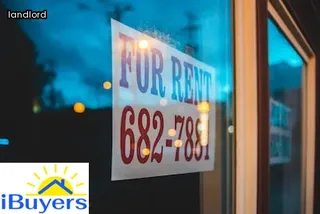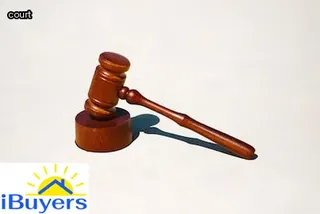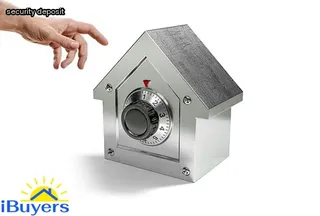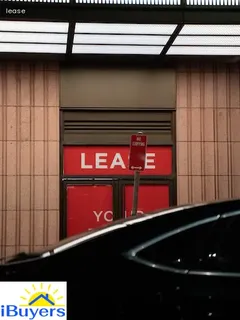When it comes to landlord-tenant relationships, understanding the difference between normal wear and tear and property damage is essential. Normal wear and tear can include things like fading paint, minor scratches on a wall, or worn out carpets.
These items are usually considered part of the natural aging process of a rental property and are not the responsibility of the tenant. On the other hand, property damage is any destruction that goes beyond normal wear and tear.
This could be intentional damage caused by tenant negligence or vandalism or could be accidental damage resulting from an unforeseen event like a plumbing problem or fire. In Colorado, landlords have certain legal obligations for providing tenants with safe living conditions which can help them distinguish between normal wear and tear versus property damage in their rental units.
Landlords should also be aware that they may be responsible for repairing any property damage regardless of cause if a tenant moves out before the end of their lease agreement. By understanding the differences between these two concepts, landlords in Colorado can ensure they are meeting their legal responsibilities while also protecting their investments in rental properties.

In Colorado, landlords may charge tenants a security deposit when entering into a rental agreement. The maximum amount of the security deposit is two times the monthly rent for unfurnished units, or three times the monthly rent for furnished units.
Landlords must return any unused portion of the security deposit within one month of the tenant vacating the unit, minus any applicable deductions. Deductions are applied to cover damages caused by the tenant beyond normal wear-and-tear on the property as well as unpaid rent and/or utility charges.
According to Colorado law, landlords must provide tenants with a written itemized list of all deductions taken from their security deposit upon its return. Landlords are also required to keep records of all security deposits and their disposition for at least one year after returning them to tenants.
It is important for landlords in Colorado to understand what constitutes normal wear-and-tear on their rental property versus damage caused by tenants, in order to ensure that they are able to accurately document and deduct from security deposits when necessary.
Navigating disputes over damage and deposits between tenants and landlords in Colorado can be daunting. It is important for each party to know their rights and responsibilities, as well as the difference between tenant damage and normal wear-and-tear.
Knowing how to assess damage and when to return a deposit is essential in avoiding costly court battles. Colorado landlords should take extra care to inspect the property both upon move-in and move-out, documenting any existing damages.
Tenants should also document any property damage they find upon move-in, so they are not held accountable for pre-existing conditions later on. Additionally, it's wise for Colorado landlords to provide tenants with a list of expectations regarding the condition of the premises before they move out.
This way, tenants understand what will be deducted from their security deposit if needed. Understanding tenant damage and normal wear-and tear in Colorado is key for both tenants and landlords when navigating disputes over damage and deposits.

Colorado landlords have plenty of resources available to them when it comes to managing their rental properties. Colorado state laws offer protection for both landlords and tenants, so understanding the legalities of tenant damage, normal wear-and-tear, and other property management issues is essential.
Colorado has a wide variety of organizations and agencies that provide assistance for landlords in this area, from educational seminars and online resources to expert legal advice. Colorado Landlord Association (CLA) is one such organization that offers resources such as webinars, podcasts, and even an online library with up-to-date information on landlord/tenant law.
Additionally, the Colorado Department of Regulatory Agencies (DORA) provides access to forms necessary for preparing leases and resolving disputes between landlords and tenants. Lastly, the Colorado Apartment Association (CAA) offers helpful tips on how to best manage rental properties along with offering support services such as dispute resolution.
With these resources at hand, Colorado landlords can feel confident in their ability to navigate any property management issue they may encounter.
When it comes to taking legal action to protect your security deposit in Colorado, it is important for landlords to understand their rights and obligations. In Colorado, landlords must ensure that tenants are aware of the terms and conditions of their rental agreement including the amount of the security deposit and what constitutes tenant damage versus normal wear-and-tear.
If a tenant causes damage beyond normal wear-and-tear, a landlord may charge them for repairs or deduct from the security deposit accordingly. Although taking legal action is an option, landlords should first consider offering mediation or alternative dispute resolution with their tenants as a more affordable option for both parties.
Additionally, Colorado law requires landlords to follow specific procedures when it comes to collecting, holding and returning deposits which must be followed exactly in order for any legal action taken by a landlord to be enforceable. It is thus essential that landlords understand these processes in order to protect themselves and their security deposits.

In Colorado, landlords are required to return a security deposit within one month of the tenant vacating the property.
Landlords are allowed to deduct from that deposit for any damages done to their property beyond what is considered normal wear-and-tear.
To avoid disputes between tenants and landlords regarding damage claims, it is important for both parties to have a clear understanding of the rules in Colorado when it comes to returning security deposits.
In this comprehensive guide, landlords can learn how to identify tenant damage versus normal wear-and-tear in order to protect themselves and their rental properties while still offering tenants fair treatment.
The move-out letter is a critically important document for landlords in Colorado. It serves as a crucial record of the tenant's condition of the rental unit upon move out and provides documentation to the landlord in case of any damage or cleaning costs that need to be recovered from the security deposit.
Furthermore, it provides protection for both landlord and tenant when it comes to understanding normal wear-and-tear versus intentional damage. The move-out letter should include an itemized list of all damages, cleaning fees and unpaid rent, if applicable.
It can also be used to document any deductions taken from the security deposit due to tenant caused damage or nonpayment of rent. Lastly, it serves as evidence in court should a dispute arise between landlord and tenant with regards to damages or unpaid rent.
Thus, landlords must ensure they complete a thorough move-out letter at the end of every tenancy in order to protect their rights and interests when it comes to understanding tenant damage & normal wear-and-tear in Colorado.

When it comes to understanding the difference between tenant damage and normal wear-and-tear in Colorado, it is important for landlords to know the steps involved in a move-out inspection. These inspections are key for landlords to recognize what type of damage has occurred and what is considered normal.
First, before the move-out inspection begins, the landlord should have an inventory of all the items that came with the rental unit when the tenant moved in. This provides a basis for comparison when conducting an inspection.
Once both parties have agreed on a time and date for the inspection, it is important that both parties are present and that any discrepancies are noted. During this process, all damages should be documented with pictures or video recordings as evidence.
The landlord may also need to check all appliances, walls, carpets, floors and other areas of the property for potential damages or excessive wear-and-tear. Following this step, both parties will review any discrepancies found during the inspection and agree on a resolution if needed.
Creating an itemized statement of deductions is a critical step for landlords in Colorado when it comes to understanding the difference between tenant damage and normal wear-and-tear. It is important to document any observed damages to the property and create an accurate account of how much should be deducted from the tenant's security deposit.
The first step is to accurately assess the damages, determine if they are caused by tenant negligence or normal wear-and-tear, and then list out all necessary items that need repair or replacement. Landlords can also include photographs as evidence of existing damages with each itemized statement.
Additionally, it is important for landlords to ensure that all deductions are reasonable and within local regulations; otherwise, tenants may have grounds for legal action against them. A well-crafted itemized statement of deductions can help protect both parties involved in a rental agreement.

If a tenant in Colorado sues you for their security deposit, it is important to remain calm and take action. You should review the terms of your lease agreement, as well as any state or local laws that may be applicable in this situation.
It is also essential to gather evidence and documentation such as photos, receipts or bills related to the damage or normal wear-and-tear. You must also be prepared to defend yourself in court if necessary.
As a landlord in Colorado, it is important to understand how tenant damage is defined and how it differs from normal wear-and-tear so that you can accurately assess the situation and make informed decisions that are beneficial for both parties.
When a tenant's security deposit does not cover the costs of damage or unpaid rent, the landlord is responsible for covering the remainder of the cost. In Colorado, landlords are legally required to provide tenants with an itemized list of deductions taken from their security deposit within thirty days after they move out.
When there is not enough in the security deposit to cover all damages and unpaid rent, the landlord can sue for further payment in court. Alternatively, landlords may choose to withhold part or all of what’s due from any future rental payments.
Landlords should be aware that if the amount owed exceeds a certain threshold, they might need to go to court before taking money from future rent payments. Additionally, if a tenant disputes deductions made from their security deposit, then it is up to the landlord to prove that any damage was caused by something other than normal wear-and-tear (such as vandalism).

As a landlord in Colorado, it is important to understand the differences between tenant damage and normal wear-and-tear when it comes to security deposits. Small claims court may be necessary for tenants who do not comply with the terms of their tenancy agreement or if they leave behind damages that exceed normal wear-and-tear.
When filing a small claims lawsuit, landlords should make sure to have all necessary paperwork including photos and any repair estimates. In addition, keep in mind that Colorado limits the amount that can be claimed in small claims court to $7,500 or less.
Security deposits are another important aspect of understanding tenant damage and normal wear-and-tear in Colorado. Landlords must follow specific guidelines when allocating security deposits which include refunding the entire deposit within 60 days of termination of tenancy, as well as providing proper notice prior to any deductions being taken from the security deposit.
Knowing these rules will help ensure landlords are following all laws regarding tenancy agreements and security deposits in Colorado.
When it comes to understanding tenant damage and normal wear-and-tear in Colorado, landlords should be aware of the importance of finding the right landlord-tenant attorney. Having an experienced attorney can help landlords navigate a variety of legal issues, from lease enforcement to eviction proceedings.
When choosing an attorney, it is important to consider their experience in landlord-tenant law and property management. Additionally, tenants should also review references and ask for a list of clients who have used the lawyer's services in the past.
This will ensure that the attorney has a good track record and understands the laws regarding rental agreements in Colorado. Lastly, landlords should make sure that they understand what fees will be charged by their lawyer before signing any documents or entering into any agreement.
With these tips in mind, landlords can be confident when selecting the right landlord-tenant attorney to assist them with understanding tenant damage and normal wear-and-tear in Colorado.

Conducting a move-out inspection is an important part of the process when a tenant vacates a rental in Colorado. It allows landlords to assess any damage that may have occurred during their tenancy and to determine if it was caused by normal wear-and-tear or tenant negligence.
As such, developing best practices for conducting and documenting a move-out inspection is essential for landlords in Colorado in order to protect themselves from any potential legal issues. Landlords should begin the move-out process by scheduling an appointment with the tenant to conduct the inspection and provide them with ample notice.
It is advisable for both parties to be present during the inspection, so that each can make notes on damages observed and any other pertinent information. Additionally, photographic evidence should be taken of all areas that are inspected and this should be included in the final documentation.
Landlords must also pay attention to state laws regarding move-out inspections and ensure they are following all relevant regulations when conducting their own inspections. Overall, having effective best practices in place when conducting move-out inspections can help landlords in Colorado understand tenant damage as well as differentiate between normal wear-and-tear versus tenant negligence.
Tenants are responsible for ensuring the property they rent is kept in a clean and habitable condition. Colorado landlords should regularly inspect the rental property to identify any tenant damage or signs of normal wear-and-tear.
Normal wear-and-tear typically comes with use over time, while tenant damage is caused by improper use or negligence on the part of the tenant. Examples of normal wear-and-tear may include scuffed walls, worn carpeting, faded paint, scratched floors, and dented appliances.
Property damage, however, includes broken windows, large holes in the walls, major water damage from plumbing issues, and smoke odor from smoking inside the premises. Landlords in Colorado must be able to accurately distinguish between normal wear-and-tear and property damage in order to protect their investments and ensure a safe living environment for tenants.

In Colorado, tenant damage to property is defined as any intentional or unintentional destruction, alteration or harm done to the rental unit that was not caused by normal wear-and-tear. Tenant damage includes things like broken windows, holes in walls, or stains on carpets.
It also includes damage caused by pets such as claw marks on walls or pet odors. In addition, tenant damage can include non-physical damages such as failing to pay rent in a timely manner.
Landlords need to be aware of what constitutes tenant damage and what is considered normal wear-and-tear so they can successfully navigate these issues with their tenants and avoid potential legal conflicts. Understanding how tenant damage is different from normal wear-and-tear is essential for landlords who want to protect their investments and create positive relationships with their tenants.
When it comes to understanding tenant damage and normal wear-and-tear in Colorado, a comprehensive guide for landlords should include the proper documentation of evidence of property damage. Proper preparation is key when dealing with tenant disputes over repairs and maintenance.
Landlords must make sure they are equipped with all the necessary tools to document damages to their properties. This includes taking detailed photographs of any existing damages, obtaining written statements from tenants regarding damages, and inspecting the property regularly.
Additionally, landlords should consider utilizing various negotiating techniques in order to resolve tenant-landlord disputes quickly and fairly. These strategies can include setting up an informal mediation session between tenant and landlord; providing incentives such as rent reduction or free services; creating a written agreement outlining each party’s duties; or taking legal action if necessary.
By understanding how to properly document evidence of property damage, landlords can be better prepared for any potential issues that may arise during their tenancy agreements in Colorado.
In Colorado, landlords are allowed to charge tenants for damages caused by negligence or intentional misconduct.
However, it is important for landlords to be able to distinguish between normal wear-and-tear and tenant damage in order to properly document any charges.
This comprehensive guide will provide a thorough explanation of what constitutes tenant damage versus normal wear-and-tear and when a landlord is required to provide proof of damages in the state of Colorado.
Understanding these distinctions is key for landlords in order to ensure that they have the legal basis to charge tenants for damages incurred during the course of their tenancy.

Normal wear and tear on a rental property in Colorado is defined as any deterioration that occurs over the course of occupancy due to the tenant’s ordinary use of the property. Examples of normal wear and tear would include fading paint, stained carpets, and minor scratches on walls or other surfaces.
These items are considered part of the normal aging process for any residence rented out in Colorado. Landlords should be aware that if a tenant causes damage beyond normal wear and tear, they may be held responsible for all repair costs associated with restoring the unit to its original condition at move-in.
Knowing what constitutes normal wear and tear versus tenant damage is essential for landlords in order to ensure their tenants are held accountable to their lease agreement obligations.
A landlord in Colorado cannot deny reasonable access to a tenant, fail to make necessary repairs, or increase rent without proper notice. Additionally, a landlord may not harass tenants by making unreasonable demands on them or disturbing their quiet enjoyment of the rental unit.
Furthermore, a landlord cannot discriminate against a tenant based on race, color, national origin, religion, sex, familial status, disability or any other protected class as determined by state and federal law. Finally, it is illegal for a landlord to evict tenants without following the proper legal procedures and providing them with adequate notice.
Landlords must also abide by the terms of the lease agreement and any applicable local laws regarding tenant-landlord matters.
Nail holes are one of the most common types of damage that landlords will encounter in Colorado, and understanding whether they constitute normal wear and tear or tenant damage can be difficult. In general, nail holes are classified as tenant damage due to their artificial nature.
However, there are exceptions to this rule in Colorado, such as when a tenant has hung artwork or mirrors on the walls using nails. In this case, nail holes could be considered normal wear and tear.
Landlords should also take into account the age of the property when determining if nail holes constitute normal wear and tear or tenant damage. For example, older properties may have more wear and tear which could include nail holes from previous tenants.
Ultimately, landlords must use their own discretion when evaluating any type of damage in order to determine if it is considered normal wear and tear or tenant damage under Colorado law.
A: Depending on the severity of damage, a tenant who negligently damages a rental property door in Colorado may be responsible for paying for repair or replacement costs.
A: Tenants can be held responsible for damages they negligently cause to rental property in Colorado. If a tenant causes damage, they may be liable for the cost of repairs or other expenses incurred by the landlord.

A: In Colorado, landlords are responsible for normal wear-and-tear of their rental property, but tenants may be liable for any damage that is caused by their negligence. For example, if a tenant negligently damages a rental property door, they may be financially responsible for the repair or replacement costs.
A: In Colorado, tenants are responsible for any damages to the rental property that exceed normal wear-and-tear. Landlords are responsible for all maintenance and repairs caused by normal wear-and-tear, but tenants may be held liable for any negligent or intentional damage to the property.
A: In the state of Colorado, if a tenant causes damage to rental property that is beyond normal wear-and-tear and they declare bankruptcy, it is difficult for landlords to collect payment. If a landlord takes the tenant to court, then a judge may decide whether or not the damages are recoverable through email assets or other sources.